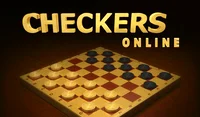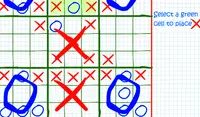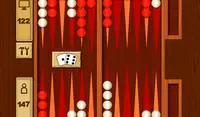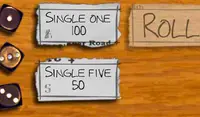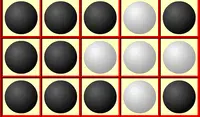Sorry... this game is not playable in your browser.


This Flash game is currently not playable in your browser, but we're working on a fix! Come back regularly to see if it's ready to play.
Most browsers no longer support Flash. Affected games are indicated by





Game content reviewed byJonathan Keefer
Chess Instructions
Tap your Chess pieces to move them. Your objective is to capture your opponent's pieces from the board and get a checkmate, where the King can be captured and the opponent is unable to prevent the King from being captured with their next move.
Chess Pieces
Each piece on the board moves differently. When your piece moves into a square that is currently occupied by an opponent's piece, you will capture that piece. Here is how each piece moves:
Pawns
Pawns can only move forward one square at a time in Chess, except on their first turn when they can move ahead two. However, they cannot move forward into a square that is occupied by another piece. Instead, they capture by moving forward one tile in a diagonal fashion.
Pawns become useful in the endgame if you are able to advance them down the board. Keep on reading the instructions to learn about one of their unique abilities.
Rooks
Rooks can move any amount of squares, but only forward, backward, or sideways. Rooks are great defenders and are usually used to protect the King for most of the game. Don't forget to castle in order to get one of your Rooks into a more useful position.
Bishops
Bishops can also move any amount of squares, but only diagonally. Note: a Bishop will remain on squares of the same color it started on. Try and pair your Bishops with your Queen to make some dangerous offensive attacks.
Knights
Knights move in an “L” shape: two squares in one direction then another at a 90-degree angle. Knights are the only pieces that can hop over other ones on the board. Use this unique characteristic to your advantage.
The King
The King can move one square at a time in any direction. However, you won't be able to move your King into a position where it'll be in check. Make sure to keep him out of danger, he is the one you need to focus on protecting.
The Queen
The Queen can move in any direction and move as many squares as possible - as long as it doesn’t move through any of its own pieces. She is your primary attacker and should be used to create creative offensive attacks.
Don’t forget: Chess is a game of logical thinking and strategic planning. You’ve got to get those mental muscles moving if you want to best your opponent!
Chess Tips & Tricks
Chess can be a complicated game to play. Not to worry though, we have some simple words of wisdom to help you get started.
Study the board
Take a moment to consider your options before making your move. It’s ideal to move to a spot that puts any of your opponent’s pieces under attack, but be careful you don’t set yourself up for a loss!
Watch your opponent’s moves carefully
Stay focused and keep an eye on what kind of moves your opponent makes. Don't move into squares where they can capture your pieces, unless you see a potential advantage. Use their movements to come up with your own strategy for taking down each of their pieces. With enough practice, you’ll be able to predict your opponent's moves based on how the board is set up each turn.
Castle your King early
Protecting your King is your number one objective, so as soon as you see an opportunity to castle, you should. To castle, you must first clear all of the space between your King and one of your Rooks. This will open up special move options for your King. Note: Castling can only be done if neither your King nor Rook have moved.
Pawns can become Queens (or almost any other piece)
If you can manage to get one of your pawns across the board to your opponent's back row, you can "promote" them into any other piece except a King. Simply choose the new piece you'd like them to become. You can even have "extra" Queens or other pieces!
Don’t be afraid to make sacrifices
In any game, you will lose some of your pieces to your opponent. An experienced Chess player will sometimes sacrifice lower-ranking pieces in order to save those that are more useful. When deciding which pieces to sacrifice, it can help to count the points.
Practice makes perfect!
As with any game, the more you play, the more you’ll learn. Chess isn’t meant to be mastered after the first game. It takes years of hard work and practice. Keep on playing and maybe someday you’ll be a Chess master, too!
Use your mouse to move your Chess pieces across the board. Your objective in Chess is to get a checkmate. To land a checkmate, you’ll need to get your opponent’s King into a position where it can be captured, and cannot be freed by the opponent’s next move.
Chess Pieces
Each piece on the board moves differently. When your piece moves into a square that is currently occupied by an opponent's piece, you will capture that piece. Here is how each piece moves:
Pawns
Pawns can only move forward one square at a time in Chess, except on their first turn when they can move ahead two. However, they cannot move forward into a square that is occupied by another piece. Instead, they capture by moving forward one tile in a diagonal fashion.
Pawns become useful in the endgame if you are able to advance them down the board. Keep on reading the instructions to learn about one of their unique abilities.
Rooks
Rooks can move any amount of squares, but only forward, backward, or sideways. Rooks are great defenders and are usually used to protect the King for most of the game. Don't forget to castle in order to get one of your Rooks into a more useful position.
Bishops
Bishops can also move any amount of squares, but only diagonally. Note: a Bishop will remain on squares of the same color it started on. Try and pair your Bishops with your Queen to make some dangerous offensive attacks.
Knights
Knights move in an “L” shape: two squares in one direction then another at a 90-degree angle. Knights are the only pieces that can hop over other ones on the board. Use this unique characteristic to your advantage.
The King
The King can move one square at a time in any direction. However, you won't be able to move your King into a position where it'll be in check. Make sure to keep him out of danger, he is the one you need to focus on protecting.
The Queen
The Queen can move in any direction and move as many squares as possible - as long as it doesn’t move through any of its own pieces. She is your primary attacker and should be used to create creative offensive attacks.
Don’t forget: Chess is a game of logical thinking and strategic planning. You’ve got to get those mental muscles moving if you want to best your opponent!
Chess Tips & Tricks
Chess can be a complicated game to play. Not to worry though, we have some simple words of wisdom to help you get started.
Study the board
Take a moment to consider your options before making your move. It’s ideal to move to a spot that puts any of your opponent’s pieces under attack, but be careful you don’t set yourself up for a loss!
Watch your opponent’s moves carefully
Stay focused and keep an eye on what kind of moves your opponent makes. Don't move into squares where they can capture your pieces, unless you see a potential advantage. Use their movements to come up with your own strategy for taking down each of their pieces. With enough practice, you’ll be able to predict your opponent's moves based on how the board is set up each turn.
Castle your King early
Protecting your King is your number one objective, so as soon as you see an opportunity to castle, you should. To castle, you must first clear all of the space between your King and one of your Rooks. This will open up special move options for your King. Note: Castling can only be done if neither your King nor Rook have moved.
Pawns can become Queens (or almost any other piece)
If you can manage to get one of your pawns across the board to your opponent's back row, you can "promote" them into any other piece except a King. Simply choose the new piece you'd like them to become. You can even have "extra" Queens or other pieces!
Don’t be afraid to make sacrifices
In any game, you will lose some of your pieces to your opponent. An experienced Chess player will sometimes sacrifice lower-ranking pieces in order to save those that are more useful. When deciding which pieces to sacrifice, it can help to count the points.
Practice makes perfect!
As with any game, the more you play, the more you’ll learn. Chess isn’t meant to be mastered after the first game. It takes years of hard work and practice. Keep on playing and maybe someday you’ll be a Chess master, too!
What do you learn from playing Chess?
Chess is one of the best games for developing critical thinking and decision-making skills. Playing Chess consistently will help players learn to prioritize certain information and keep track of many moving pieces. All of this together means players develop the ability to analyze lots of information and then come up with the best decisions. While this is a learning process, playing chess often can help players reinforce these skills faster and then apply them to everyday life.
What are the 3 golden rules of Chess?
There are many different tiny rules in Chess. However, you can pretty much sum them up with 3 main ones – Control the center, place your pieces in squares where they are able to attack, and get your King to safety quickly (usually done by castling). If you follow all of these rules, odds are that you will play a good game of Chess.
Why is Chess so hard?
The reason that Chess is so hard is that there are so many different options available at almost every move. There are literally hundreds of different openings that players can make, each with their own strengths and weaknesses.
Along with this, every piece has such a unique movement that there are options at all times. Do you want to try and get your king to safety quickly? Do you want to get your Knights out into the center where they can do the most damage? Do you want to get your Queen out into an aggressive position where she can potentially checkmate the opponent? These are all questions you need to be asking yourself constantly throughout the game.
Knowing when and how to achieve these goals gets awfully complicated. It takes most players a few weeks just to get a good grasp of how the pieces move, let alone knowing where to move them to.
What is the most powerful piece in Chess?
The most powerful piece in Chess is without a doubt the Queen. The Queen combines the powers of the Bishop and the Rook – she can move vertically, horizontally, or diagonally for as many squares as she wants.
The only ability that the Queen doesn’t have is to hop pieces. Only the Knight has this attribute. However, due to the knight only being able to move in an ‘L’ pattern, it doesn’t have nearly the same versatility as the Queen.
What is the best first move in Chess?
There are tons of different moves you can make in Chess. You can start out by getting one of your Knights out, trying to flank with a Pawn on the edge, or going directly at your opponent by moving a Pawn to the center.
The last option is generally regarded as the best first move in Chess. If a player is going first, moving the white Pawn on the King’s side is the best move in most players’ opinion. This can also be annotated as Pawn to e4.
However, trying out odd and less well-known openings can be a great way to throw newer players off. Maybe try something like the English Opening, an opening where players start out with Pawn to c4. This flanks the opponent, as well as allows players to get their Queen out early.
A similar opening move is the Dutch Attack, where players begin by moving their white pawn to f4. This allows players to flank their opponent's center Pawns if they choose to try and control the middle.
Just a moment while your advertisement loads
Advertisement
Just a moment while your advertisement loads
Advertisement
Chess
Game content reviewed byJonathan Keefer
Chess Instructions
Tap your Chess pieces to move them. Your objective is to capture your opponent's pieces from the board and get a checkmate, where the King can be captured and the opponent is unable to prevent the King from being captured with their next move.
Chess Pieces
Each piece on the board moves differently. When your piece moves into a square that is currently occupied by an opponent's piece, you will capture that piece. Here is how each piece moves:
Pawns
Pawns can only move forward one square at a time in Chess, except on their first turn when they can move ahead two. However, they cannot move forward into a square that is occupied by another piece. Instead, they capture by moving forward one tile in a diagonal fashion.
Pawns become useful in the endgame if you are able to advance them down the board. Keep on reading the instructions to learn about one of their unique abilities.
Rooks
Rooks can move any amount of squares, but only forward, backward, or sideways. Rooks are great defenders and are usually used to protect the King for most of the game. Don't forget to castle in order to get one of your Rooks into a more useful position.
Bishops
Bishops can also move any amount of squares, but only diagonally. Note: a Bishop will remain on squares of the same color it started on. Try and pair your Bishops with your Queen to make some dangerous offensive attacks.
Knights
Knights move in an “L” shape: two squares in one direction then another at a 90-degree angle. Knights are the only pieces that can hop over other ones on the board. Use this unique characteristic to your advantage.
The King
The King can move one square at a time in any direction. However, you won't be able to move your King into a position where it'll be in check. Make sure to keep him out of danger, he is the one you need to focus on protecting.
The Queen
The Queen can move in any direction and move as many squares as possible - as long as it doesn’t move through any of its own pieces. She is your primary attacker and should be used to create creative offensive attacks.
Don’t forget: Chess is a game of logical thinking and strategic planning. You’ve got to get those mental muscles moving if you want to best your opponent!
Chess Tips & Tricks
Chess can be a complicated game to play. Not to worry though, we have some simple words of wisdom to help you get started.
Study the board
Take a moment to consider your options before making your move. It’s ideal to move to a spot that puts any of your opponent’s pieces under attack, but be careful you don’t set yourself up for a loss!
Watch your opponent’s moves carefully
Stay focused and keep an eye on what kind of moves your opponent makes. Don't move into squares where they can capture your pieces, unless you see a potential advantage. Use their movements to come up with your own strategy for taking down each of their pieces. With enough practice, you’ll be able to predict your opponent's moves based on how the board is set up each turn.
Castle your King early
Protecting your King is your number one objective, so as soon as you see an opportunity to castle, you should. To castle, you must first clear all of the space between your King and one of your Rooks. This will open up special move options for your King. Note: Castling can only be done if neither your King nor Rook have moved.
Pawns can become Queens (or almost any other piece)
If you can manage to get one of your pawns across the board to your opponent's back row, you can "promote" them into any other piece except a King. Simply choose the new piece you'd like them to become. You can even have "extra" Queens or other pieces!
Don’t be afraid to make sacrifices
In any game, you will lose some of your pieces to your opponent. An experienced Chess player will sometimes sacrifice lower-ranking pieces in order to save those that are more useful. When deciding which pieces to sacrifice, it can help to count the points.
Practice makes perfect!
As with any game, the more you play, the more you’ll learn. Chess isn’t meant to be mastered after the first game. It takes years of hard work and practice. Keep on playing and maybe someday you’ll be a Chess master, too!
What do you learn from playing Chess?
Chess is one of the best games for developing critical thinking and decision-making skills. Playing Chess consistently will help players learn to prioritize certain information and keep track of many moving pieces. All of this together means players develop the ability to analyze lots of information and then come up with the best decisions. While this is a learning process, playing chess often can help players reinforce these skills faster and then apply them to everyday life.
What are the 3 golden rules of Chess?
There are many different tiny rules in Chess. However, you can pretty much sum them up with 3 main ones – Control the center, place your pieces in squares where they are able to attack, and get your King to safety quickly (usually done by castling). If you follow all of these rules, odds are that you will play a good game of Chess.
Why is Chess so hard?
The reason that Chess is so hard is that there are so many different options available at almost every move. There are literally hundreds of different openings that players can make, each with their own strengths and weaknesses.
Along with this, every piece has such a unique movement that there are options at all times. Do you want to try and get your king to safety quickly? Do you want to get your Knights out into the center where they can do the most damage? Do you want to get your Queen out into an aggressive position where she can potentially checkmate the opponent? These are all questions you need to be asking yourself constantly throughout the game.
Knowing when and how to achieve these goals gets awfully complicated. It takes most players a few weeks just to get a good grasp of how the pieces move, let alone knowing where to move them to.
What is the most powerful piece in Chess?
The most powerful piece in Chess is without a doubt the Queen. The Queen combines the powers of the Bishop and the Rook – she can move vertically, horizontally, or diagonally for as many squares as she wants.
The only ability that the Queen doesn’t have is to hop pieces. Only the Knight has this attribute. However, due to the knight only being able to move in an ‘L’ pattern, it doesn’t have nearly the same versatility as the Queen.
What is the best first move in Chess?
There are tons of different moves you can make in Chess. You can start out by getting one of your Knights out, trying to flank with a Pawn on the edge, or going directly at your opponent by moving a Pawn to the center.
The last option is generally regarded as the best first move in Chess. If a player is going first, moving the white Pawn on the King’s side is the best move in most players’ opinion. This can also be annotated as Pawn to e4.
However, trying out odd and less well-known openings can be a great way to throw newer players off. Maybe try something like the English Opening, an opening where players start out with Pawn to c4. This flanks the opponent, as well as allows players to get their Queen out early.
A similar opening move is the Dutch Attack, where players begin by moving their white pawn to f4. This allows players to flank their opponent's center Pawns if they choose to try and control the middle.
Use your mouse to move your Chess pieces across the board. Your objective in Chess is to get a checkmate. To land a checkmate, you’ll need to get your opponent’s King into a position where it can be captured, and cannot be freed by the opponent’s next move.
Chess Pieces
Each piece on the board moves differently. When your piece moves into a square that is currently occupied by an opponent's piece, you will capture that piece. Here is how each piece moves:
Pawns
Pawns can only move forward one square at a time in Chess, except on their first turn when they can move ahead two. However, they cannot move forward into a square that is occupied by another piece. Instead, they capture by moving forward one tile in a diagonal fashion.
Pawns become useful in the endgame if you are able to advance them down the board. Keep on reading the instructions to learn about one of their unique abilities.
Rooks
Rooks can move any amount of squares, but only forward, backward, or sideways. Rooks are great defenders and are usually used to protect the King for most of the game. Don't forget to castle in order to get one of your Rooks into a more useful position.
Bishops
Bishops can also move any amount of squares, but only diagonally. Note: a Bishop will remain on squares of the same color it started on. Try and pair your Bishops with your Queen to make some dangerous offensive attacks.
Knights
Knights move in an “L” shape: two squares in one direction then another at a 90-degree angle. Knights are the only pieces that can hop over other ones on the board. Use this unique characteristic to your advantage.
The King
The King can move one square at a time in any direction. However, you won't be able to move your King into a position where it'll be in check. Make sure to keep him out of danger, he is the one you need to focus on protecting.
The Queen
The Queen can move in any direction and move as many squares as possible - as long as it doesn’t move through any of its own pieces. She is your primary attacker and should be used to create creative offensive attacks.
Don’t forget: Chess is a game of logical thinking and strategic planning. You’ve got to get those mental muscles moving if you want to best your opponent!
Chess Tips & Tricks
Chess can be a complicated game to play. Not to worry though, we have some simple words of wisdom to help you get started.
Study the board
Take a moment to consider your options before making your move. It’s ideal to move to a spot that puts any of your opponent’s pieces under attack, but be careful you don’t set yourself up for a loss!
Watch your opponent’s moves carefully
Stay focused and keep an eye on what kind of moves your opponent makes. Don't move into squares where they can capture your pieces, unless you see a potential advantage. Use their movements to come up with your own strategy for taking down each of their pieces. With enough practice, you’ll be able to predict your opponent's moves based on how the board is set up each turn.
Castle your King early
Protecting your King is your number one objective, so as soon as you see an opportunity to castle, you should. To castle, you must first clear all of the space between your King and one of your Rooks. This will open up special move options for your King. Note: Castling can only be done if neither your King nor Rook have moved.
Pawns can become Queens (or almost any other piece)
If you can manage to get one of your pawns across the board to your opponent's back row, you can "promote" them into any other piece except a King. Simply choose the new piece you'd like them to become. You can even have "extra" Queens or other pieces!
Don’t be afraid to make sacrifices
In any game, you will lose some of your pieces to your opponent. An experienced Chess player will sometimes sacrifice lower-ranking pieces in order to save those that are more useful. When deciding which pieces to sacrifice, it can help to count the points.
Practice makes perfect!
As with any game, the more you play, the more you’ll learn. Chess isn’t meant to be mastered after the first game. It takes years of hard work and practice. Keep on playing and maybe someday you’ll be a Chess master, too!
Votes
Pick Up Where You Left Off
Other Classic Games
The highly addicting number puzzle. Three difficulty levels to choose from, unlimited boards to solve!
Fill in the spaces with the right numbers.
The classic mine-finding game. Search tiles to uncover clues and figure out where all the mines are. Sweep the entire area and flag all of the mines to win!
Use the clues to find the mines.
Play vs. the computer or join a match against another online player!
Challenge the computer or try online matchmaking!
Race to get all your pieces off the board in this classic game.
Get all your pieces off the board.
Play the classic game of X's and O's vs. the computer or a friend. Then try to get four in a row on our super-sized 5x5 grid.
Outsmart your opponent in the game of X's and O's.
Control your moves and cover the board with your color in the classic disc-flipping game.
Cover the board with your color in this classic game.
Add some color to the pencil-and-paper classic! Can you outsmart the computer and fill the board with your boxes?
The digital version of the pencil-and-paper classic.
This puzzle game dates back to the 17th century. Can you find the right moves to get down to one?
Make the right jumps to get down to one.







